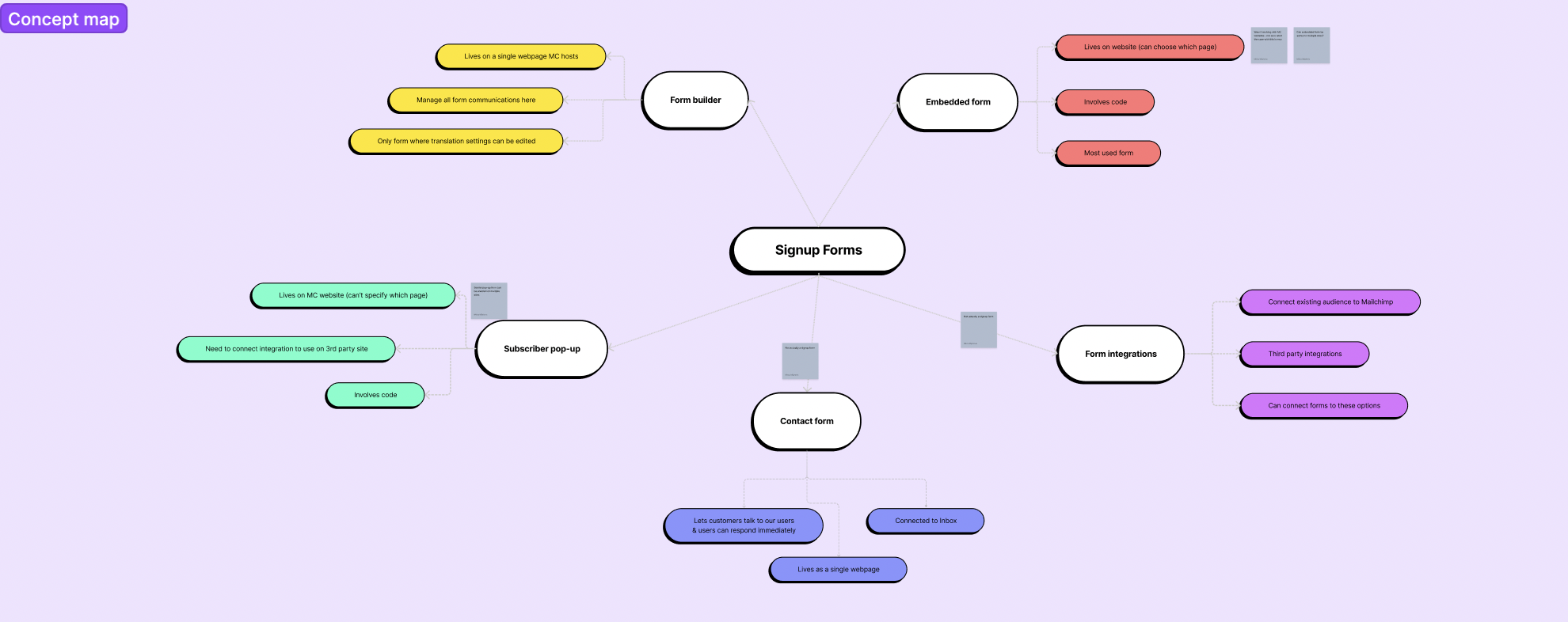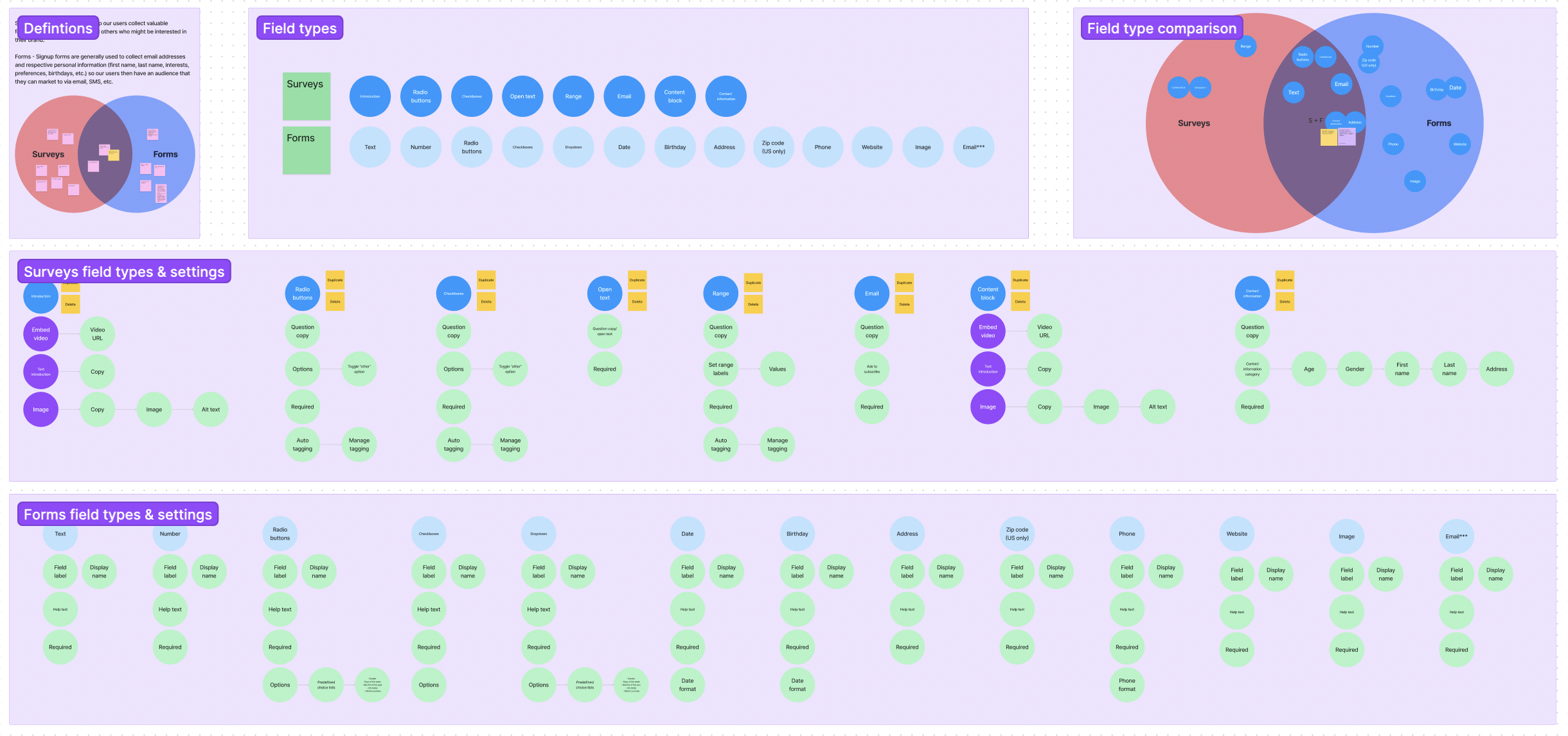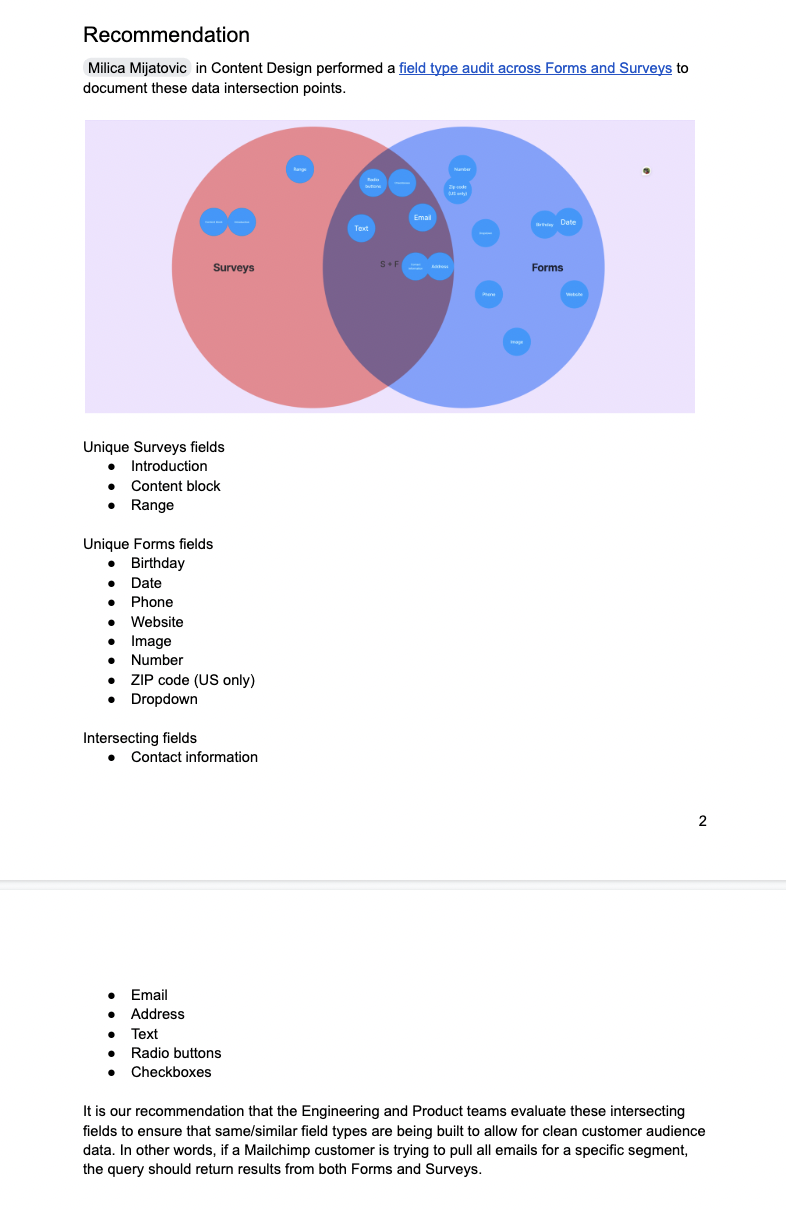Mailchimp: Surveys and Forms
My role:
Content Designer
The context
Mailchimp’s Surveys and Forms are closely related products: both let users collect information via forms. But they weren’t well aligned behind the scenes. Their field types overlapped yet behaved differently, causing confusion, data inconsistencies, and maintenance complexity.
Because I spent some time helping the Surveys squad, when I joined the Forms team, I noticed huge similarities and had questions about how each product uses field types. I wanted to take a closer look because I believed there was a significant experience risk at play, and by default, a huge opportunity we were missing.
My process
1) Audit field types across products
I audited every field type in both Surveys and Forms and noted how each behaved on the frontend and how that impacted the backend, aka where and how the data was being stored.
I annotated duplicates, conflicts, subtle behavioral differences, and any accessibility gaps I saw.
2) Compare and diagnose inconsistencies
I mapped which field types were essentially the same in name or purpose, then compared how they functioned differently (e.g. how dropdowns handle “Other”, how date pickers validate, how empty states are handled).
I also flagged where functionality existed in one product but not the other.
3) Surface risks & hypotheses
From those inconsistencies, I drew out experience risks:
Users expecting behavior A in Surveys but seeing B in Forms and vice versa, leading to user frustration
Data pipeline mismatches behind the scenes that we weren’t even aware of
Internationalization issues (eg, only allowing the US phone format)
Maintenance burden and opportunity cost for developers and content teams
I wrote up my findings, annotated risks, and drafted hypotheses about how to reconcile the problem and standardize our field types. My manager then turned this work into an official company brief to share with senior leadership and alert them of the problem.
4) Present & collaborate
I shared my audit + risk brief with peers, content leadership, and product management.
I presented to stakeholders including two senior UX directors, framing this as both a UX and data integrity / infrastructure problem. This catalyzed cross‑team conversations between Forms, Surveys, and data engineering.
And I was successful in getting the fix to this problem out of the backlog and into sprints!
What changed
The audit became the foundation for a brief that informed roadmap decisions around aligning field types.
Stakeholders across squads referenced my findings when planning improvements to shared field type infrastructure.
Conversations and work began around standardizing behaviors, unifying schemas, and bridging gaps between Surveys and Forms.
Teams proactively started exploring merging or harmonizing certain field behaviors and data collection.
While work is ongoing, my initiative brought visibility to a hidden experience risk and improvements in cohesion and maintainability.
Why this work mattered
This was more than just “cleanup”. It was about surface-level content revealing deeper product architecture issues. By surfacing those risks through the content audit, I elevated the conversation from “these buttons are inconsistent” to “our products are diverging in data assumptions.” Ultimately, this kind of thinking helps Mailchimp deliver more reliable, trustworthy, and scalable experiences, all while eliminating user frustration.




